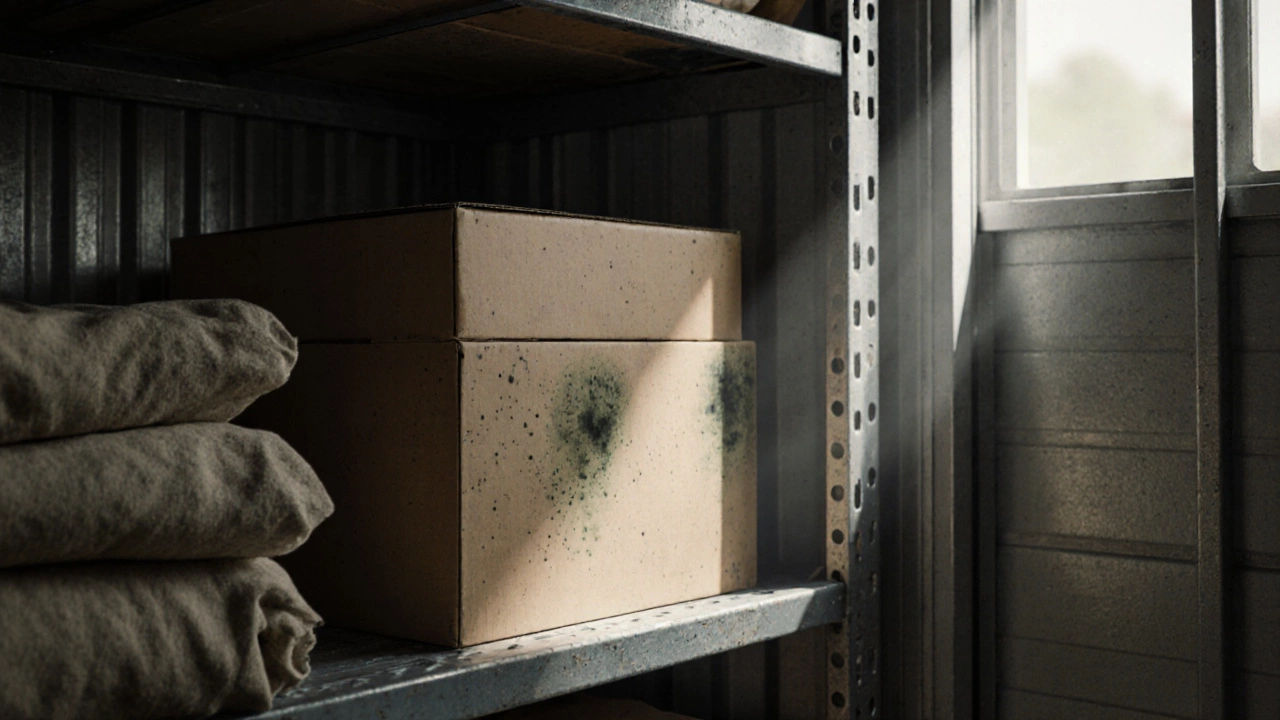Storage Unit Mold Prevention: Simple Steps to Protect Your Belongings
When working with Storage Unit Mold Prevention, the practice of stopping mold growth inside storage facilities by managing moisture, temperature, and airflow. Also known as mold control in storage, it keeps your furniture, documents, and other valuables from deteriorating.
One of the biggest triggers for mold is excess Humidity Control, the process of keeping indoor air moisture within safe limits. When humidity rises above 60 %, spores can settle and multiply on walls, boxes, and soft furnishings. That’s why a well‑ventilated space combined with a reliable dehumidifier is a core part of any mold‑prevention plan. Humidity control isn’t just about buying a gadget; it means understanding how temperature interacts with moisture to create a breeding ground for mold.
Why Climate‑Controlled Storage Matters
Climate Controlled Storage, storage units that maintain steady temperature and humidity levels offers a built‑in defense against mold. By keeping conditions stable, you remove the swings that encourage fungal growth. For example, a unit that stays around 55 °F with 45 % relative humidity is far less likely to host mold than an unregulated space that experiences summer heat spikes. This relationship forms a clear semantic triple: climate‑controlled storage reduces moisture fluctuations, which in turn lowers mold risk.
Even if you choose a regular unit, you can mimic climate control with a few simple habits. Seal all boxes with plastic wrap, use moisture‑absorbing packets, and place a small electric dehumidifier inside. These actions create a micro‑environment that behaves like a climate‑controlled unit, even without the higher price tag. The key is consistency—check the unit weekly, replace silica packets, and empty the dehumidifier’s reservoir before it overfills.
Another essential tool is a Moisture Barrier, a protective layer that stops water vapor from reaching stored items. You can lay heavy-duty polyethylene sheets on the floor or line shelves with moisture‑resistant boards. When combined with proper ventilation, barriers act like a shield, preventing water from seeping through walls or floor cracks. The semantic connection here is: moisture barriers block water, ventilation removes damp air, and together they halt mold development.
Ventilation works hand‑in‑hand with humidity control. Opening the unit’s door for a few minutes each day allows fresh air to circulate, pushing out stale, damp air that could nurture spores. If the unit has built‑in vents, keep them clear of boxes and pallets. For units without vents, consider a portable battery‑powered fan to improve airflow. This simple step is often overlooked, yet it’s a low‑cost way to keep mold at bay.
Beyond equipment, the items you store matter too. Wooden furniture, fabrics, and paper are especially vulnerable. Before placing them in the unit, give each piece a thorough cleaning and let it dry completely. Apply a breathable fabric protector to upholstery and a wax coating to wood surfaces. These treatments act as a secondary line of defense, reducing the food source mold needs to thrive.
Lastly, monitor your unit regularly. Use a digital hygrometer to track humidity levels; most models give real‑time readings and alerts if moisture spikes. If you notice condensation on walls or a musty smell, act quickly—remove any soaked items, increase dehumidifier usage, and improve ventilation. Early detection prevents a small problem from becoming a costly disaster.
By combining storage unit mold prevention techniques—humidity control, climate‑controlled options, dehumidifiers, moisture barriers, and good ventilation—you create a robust system that protects your belongings for years. Below you’ll find articles that dive deeper into each of these strategies, share real‑world tips, and help you choose the right tools for your specific storage needs.
Can Mold Grow in Storage Units? Risks and Prevention Tips
Learn if mold can grow in storage units, how to spot it early, and practical steps to prevent and remediate mold in your stored items.







